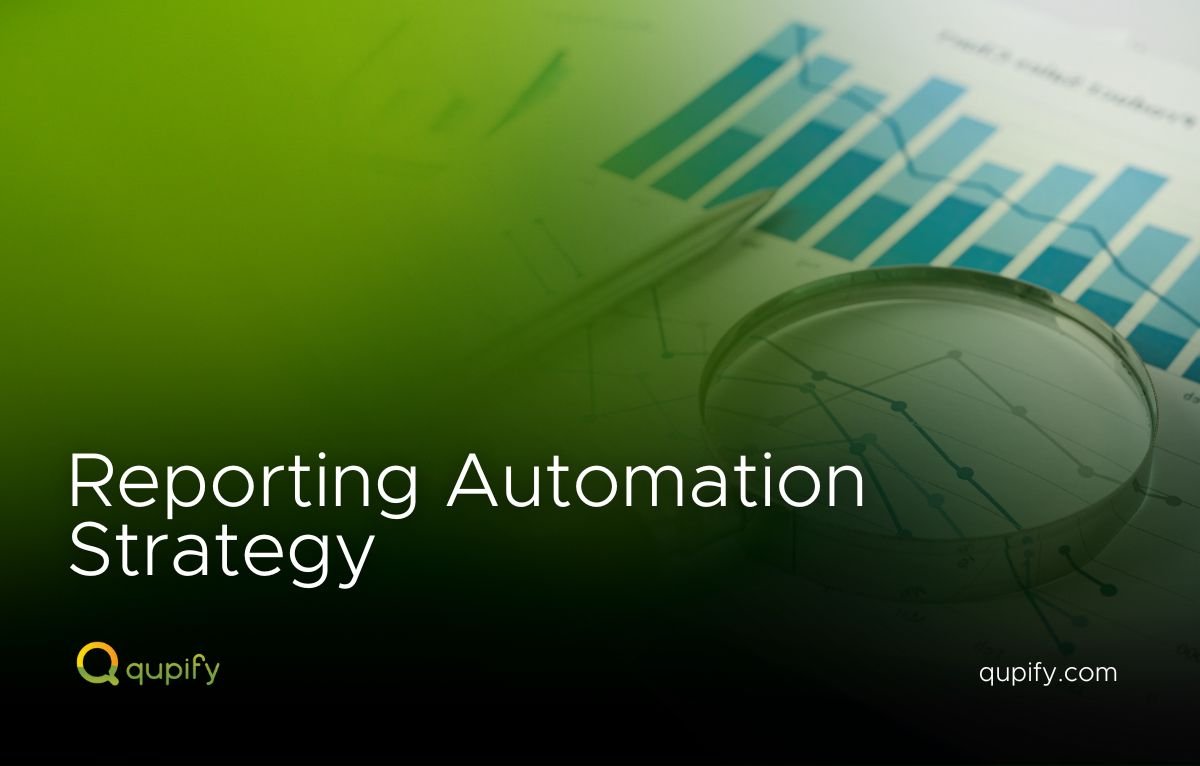Reporting Automation Strategy: Enhancing Accuracy and Efficiency
Highlights
- Start with a clear understanding of your existing workflows.
- Identify repetitive, time-consuming, or error-prone tasks for automation.
- Build a strong foundation for successful automation.

Automation is a game-changer for businesses, helping save time, reduce errors, and improve efficiency. However, jumping into automation without proper planning can lead to wasted resources and effort.
The first step to creating a successful automation strategy is understanding where automation can help the most. This involves assessing your current processes to find tasks that will benefit the most from automation.
Why Assessing Business Processes is Important
Assessing your workflows is like taking stock of your business operations. By analyzing how tasks are currently handled, you can uncover inefficiencies and pinpoint areas for improvement.
This evaluation ensures that automation efforts are focused on the right processes, maximizing impact and return on investment.
For instance, repetitive tasks like data entry or customer inquiries can easily be automated, freeing up employees for higher-value work.
Without this step, businesses risk automating the wrong tasks or using tools that don’t fit their needs.
Learn more about some of the top benefits of using automation in your business’ daily processes here.
3 Steps to Assess Your Business Processes
1. Map Out Your Workflows
The first step in assessing your business processes is to map out your workflows. Document each task, from start to finish, breaking it down into smaller steps.
By doing so, you can gain a clear understanding of how tasks are performed and where inefficiencies might exist.
For instance, if you’re reviewing an order management process, you’ll identify how orders are placed, processed, and delivered.
This approach helps reveal which steps take the most time or involve unnecessary complexity, providing a clearer picture of what needs improvement.
2. Identify Repetitive and Time-Consuming Tasks
Next, look for tasks that are done repeatedly or take a significant amount of time to complete. These are often the best candidates for automation.
Repetitive tasks, such as answering common customer questions or entering data into spreadsheets, are examples of processes that can be automated effectively.
By automating these tasks, employees can shift their focus to more important responsibilities.
Similarly, automating time-consuming tasks, like report generation or data processing, can lead to significant time savings and increased productivity across teams.
3. Find Tasks Prone to Errors
Finally, focus on error-prone tasks. Human errors in processes like invoicing or data entry can lead to costly mistakes that disrupt operations. Automation ensures that these tasks are completed accurately and consistently.
For instance, payroll systems that rely on manual calculations often encounter discrepancies, which automation can eliminate.
Automating error-prone tasks not only improves accuracy but also reduces the stress and time associated with correcting mistakes, leading to a more efficient workflow.
Setting Clear Goals for Automation
After identifying which tasks to automate, it’s essential to set clear goals for your strategy. These goals should align with your business objectives and help measure the success of automation efforts.
For example, if your priority is to reduce operational costs, your goal might be to automate manual data entry to save time and resources.
Alternatively, if improving customer service is a focus, you could aim to implement a chatbot that provides instant responses to common inquiries. By setting measurable goals, you provide direction for your automation strategy and benchmarks to track progress over time.
How Qupify Can Help
Automation can feel overwhelming, but you don’t have to do it alone. Qupify specializes in helping businesses develop automation strategies tailored to their unique needs.
We guide businesses through every step, from assessing workflows to selecting and implementing the right tools.
Our team ensures your systems are integrated smoothly, maximizing efficiency and minimizing disruptions. Whether it’s streamlining workflows, improving accuracy, or scaling your operations, Qupify’s experts provide the support needed to achieve measurable results.
With ongoing support and optimization, we make sure your automation strategy keeps delivering long-term benefits.
Final Thoughts
The first step in developing an automation strategy is understanding your current processes. By mapping workflows, identifying repetitive or error-prone tasks, and setting clear goals, you can build a strong foundation for successful automation.
With careful planning and the right tools, automation can transform your business, saving time and reducing costs. For tailored solutions that fit your needs, reach out to Qupify and take the first step toward smarter, more efficient operations.



